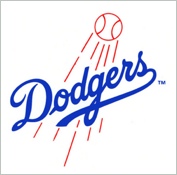-
Will L.A.'s Non-Sports Fans Revolt Over Dodgers' Mega-Deal?
This week's eye-popping $2.15 billion acquisition of the Dodgers officially makes Los Angeles ground zero for
 the most egregiously anti-consumer aspect of today's pay-TV multichannel bundle: the massive annual subsidization by non-sports fans of hyper-expensive sports programming.
the most egregiously anti-consumer aspect of today's pay-TV multichannel bundle: the massive annual subsidization by non-sports fans of hyper-expensive sports programming.
This is a topic I have written about previously in "Not a Sports Fan? Then You're Getting Sacked For At Least $2 Billion Per Year" and "Why Albert Pujols is Over-the-Top's New Best Friend." A confluence of factors, some particular to L.A.'s sports market, is bringing this little-understood issue into the spotlight, in turn raising the question of whether non-sports fans will revolt, seeking out less expensive over-the-top alternatives.First a little context. While complaints about sports programming fees often center on ESPN and its affiliate networks - which, to be sure, are the highest-priced channels on the dial - the reality is that Regional Sports Networks ("RSNs") have also become a huge driver of pay-TV subscriber rate increases. It wasn't that long ago that these RSNs were considered "mini-pay" networks, priced at around $5-6 per month and subscribed to only by fans of the local teams whose broadcast rights the RSN had obtained (if the games weren't available for free on local broadcast TV).
The mini-pay model was problematic for RSNs because churn inevitably spiked when the team's season ended (or earlier if the its performance was lousy). To offset this cyclicality, RSNs' successfully negotiated their way into pay-TV operators' basic tier. Now, instead of getting $5-6 from 10-20% of subscribers for part of the year, they'd get a fraction of that, but for all basic subscribers for the full year, whether the subscriber was a fan or not. Subscribers who hadn't previously chosen to take the RSN were now in effect, stuck paying for it. And because of the multichannel bundle model, they couldn't selectively drop the RSN, just as they couldn't drop other basic channels.
As bad as that was for non-sports fans, over the last 5-10 years things have gotten far worse. With the rise of DVRs and online video alternatives, audiences for live programming and the ads they carry have become ever more precious. That has put RSNs in the catbird's seat in negotiating higher carriage rates from pay-TV operators who in turn pass along their higher costs to subscribers. Despite pay-TV operators' growing concern about their heightening subscriber rates, not carrying a local team's RSN has been perceived as a serious competitive disadvantage.
These are precisely the dynamics that Magic Johnson and his partners, as the new Dodgers' owners, are seeking to capitalize on. They're betting big that if they can restore the Dodgers' luster, they'll either be able to obtain record-setting carriage fees from an existing L.A. RSN (e.g. Fox Sports West/Prime Ticket or Time Warner's new Lakers RSN) or simply create their own. Either way, the end result will be a huge rate escalation to pay-TV operators to carry Dodgers games, and in turn to the area's subscribers - whether they're fans or not.
To get a sense of how outlandish the non-fan subsidies are, consider that at mid-season last year, Dodgers games were pulling a meager 1.2 TV rating. That means an average of just 67,000 homes were tuning in, in a market with 18 million people. Since virtually all of the area's 5 million pay-TV homes have Prime Ticket in their basic tier, almost 99% of homes were paying for Dodgers games they weren't watching. While that's eye-opening, it turns out that even a winning franchise like the Yankees don't do that much better: they were drawing an average of 309,000 viewers on YES (their RSN), but with about 7 million pay-TV homes in the NYC area, that's still almost 96% of homes that weren't tuning into games, on average.
Despite these ratings realities, some observers believe the new Dodgers RSN deal could go for $4 billion if the owners successfully orchestrate a bidding war. If the deal were for 20 years (which may be long), that's $200 million per year the RSN would be paying, or $40 per L.A. pay-TV subscriber per year that it would seek to recover in its own deals with area pay-TV operators. For subscribers that's just the tip of what's coming their way: Time Warner Cable recently signed the Lakers for $3 billion to create 2 new RSNs and FSW reportedly paid $3 billion to carry the Angels. These RSNs, and their pay-TV operator customers, will require higher subscriber rates to recoup these expenditures. That means non-fans will be expected to pay multi-billion dollar subsidies to make these deals work.
The obvious question is will the L.A. area's pay-TV subscribers - the majority of which do not tune into these games - idly sit by and pay the higher rates, or will they jump ship to cheaper OTT options? The Dodgers' new owners are making an enormous bet that most will stay in place. Given the proliferation of video choices driven by new technologies like the iPad, that feels like an awfully big huge assumption.
Regardless, the recent events in L.A. make clear that live sports has become the most critical element in pay-TV's future - will they act as glue for the multichannel bundle or will they cause it to collapse under its ever-more expensive weight? We'll see.Categories: 3D, Analytics, Cable Networks, Sports
Topics: Los Angeles Dodgers


